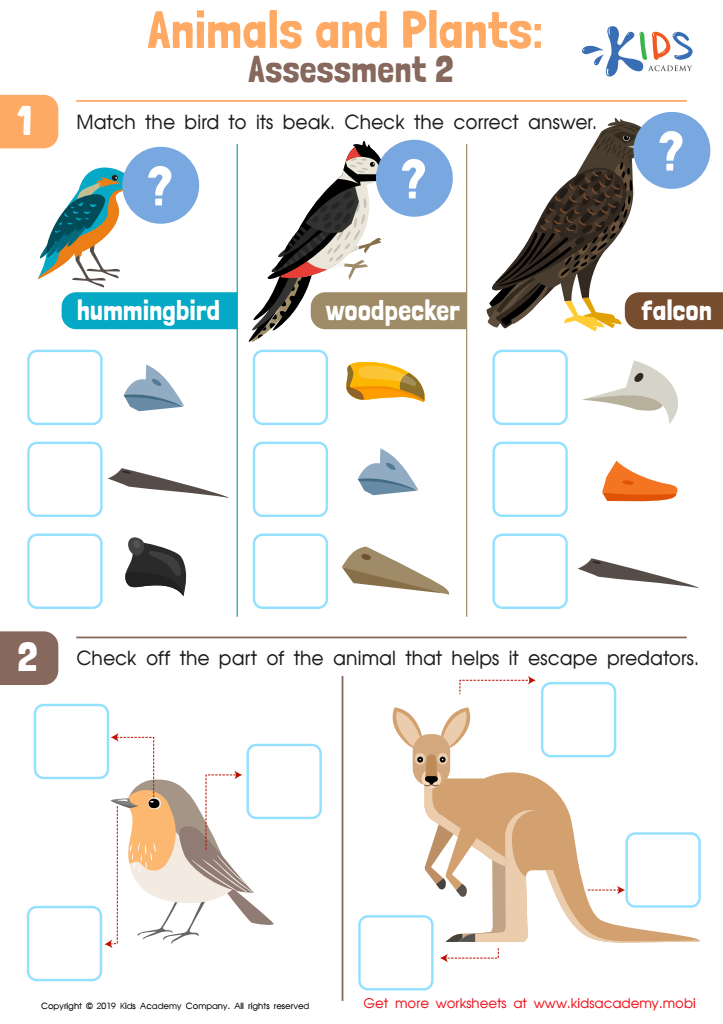Recognizing plants Worksheets for Kids
1 filtered results
-
From - To


Animals and Plants: Assessment 2 Worksheet
Question/Answer
What does the Recognizing plants skill mean when it comes to Grade 1 Our Planet and Environment learning?
The Recognizing plants skill in Grade 1 Our Planet and Environment learning involves teaching students how to identify and name common plants in their environment. This skill helps young learners understand plant diversity, recognize the importance of plants in ecosystems, and appreciate nature's role in our lives.
How to test a Grade 1 student’s Recognizing plants skills?
To test a Grade 1 student's recognizing plants skills, use a mix of real plants, pictures, and flashcards. Ask them to identify common plants by their names, distinguish between different types of plants (e.g., trees, flowers, vegetables), and point out basic parts of a plant (leaves, stem, roots). Incorporate hands-on activities and outdoor observations for an engaging assessment.
What are some effective activities to train students’ Recognizing plants skill when teaching them about Our Planet and Environment?
Effective activities include plant identification walks, creating herbariums, plant photography projects, interactive digital apps for identifying species, gardening and planting exercises, and the use of flashcards or bingo games with local flora. These hands-on experiences and engaging tools help students learn to recognize different plants and understand their roles in the ecosystem and importance to the environment.
 Assign to the classroom
Assign to the classroom











